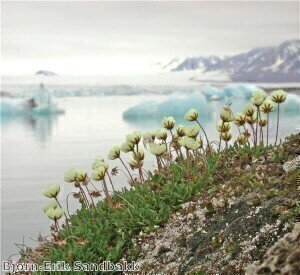Water/Wastewater
Investigating Pollution in the Arctic
Jan 30 2015
Much of the current understanding of how environmental pollutants affect organisms comes from experimental data on individual contaminants. However, researchers from the Fram Centre in Norway believe that the combined effect of several substances could be more severe than the sum of their individual effects. They are now studying the fish populations in the lakes of a remote Norwegian island to see whether this “cocktail effect” exists
When looking at the effects of contaminants in the environment, many studies focus upon a single substance (such as mercury or PCB) and then observe how it affects different organisms. However, there may be a fundamental problem with this approach, according to Anita Evenset from the research institute Akvaplan-niva in Norway. “Under natural conditions, animals are exposed to a cocktail of contaminants simultaneously – PCBs, brominated compounds, phosphorylated compounds, metals and more,” she explains. “Many studies in the past have failed to look at how these contaminants work and act together. There is a real lack of knowledge of how these contaminants affect wildlife in a natural setting.”
In fact, it is very possible that when organisms are exposed to many contaminants at once – such as occurs in the wild – the damaging effects of each substance are magnified, making the mixture far more dangerous than the sum of its ingredients. It is this overall effect of the environmental cocktail of pollution in the waters of the Arctic that Evenset has spent the last few years of her work trying to elucidate.
Evenset has been studying the transport of contaminants to and within the arctic environment for many years, and a few years ago her work brought her to Bjørnøya, where she and her collegues made a surprising discovery. One of the lakes her team looked at contained extremely high levels of persistent organic pollutants (POPs), substances usually associated with nearby industrial activity or human habitation. Other similar lakes just kilometres away showed a mere fraction of the contamination. Evenset and her team subsequently began a series of studies to study this environmental anomaly.
It quickly became apparent that this particular lake was inhabited by large numbers of seabirds that were acting as vectors for the contamination through deposits of guano and feathers and other organic materials. The presence of a similar lake in close proximity with a similar ecological structure but low levels of contamination provides a perfect comparison, and together the two lakes constitute an ideal field laboratory for the researchers. Some of their most recent work has been investigating the differences between fish populations in each of the lakes, taking samples from individuals to quantify e.g. hormone levels and gene expression (the up and down-regulation of specific genes can be used as a reliable guide to the levels of production of particular hormones and enzymes in an individual).
The results of this project could be significant for environmental managers. Present legislation is based upon single-compound assessments, but more accurate guidelines for acceptable concentrations of substances could be developed with more detailed knowledge of how organisms react to combinations of contaminants i.e. multi-compound assessments. “I believe that we still need more studies looking at different physiological responses in order to get a broader picture of what is happening. There are many different processes that can be affected by contaminants that we can’t possibly look at in this one project,” says Evenset. “It would also be good to look at other animals such as mammals to investigate the difference in e.g. metabolic response.”
Although arctic ecosystems generally have lower levels of pollution than industrialised and inhabited areas, persistent organic pollutants present a very real threat to the animals at the top of the food chain. Food webs in the arctic are very lipid rich, leading to high concentrations of these pollutants being found in the top predators such as polar bears. Projects such as this will help us to gain a deeper understanding of how these contaminants enter the Artic ecosystem, how they affect the development of organisms within the ecosystem, and what constitutes an unacceptable level of contamination in this relatively untouched part of the world.
Events
Apr 22 2024 Hannover, Germany
Apr 23 2024 Kuala Lumpur, Malaysia
Apr 24 2024 Sao Paulo, Brasil
May 05 2024 Seville, Spain
May 13 2024 Munich, Germany













